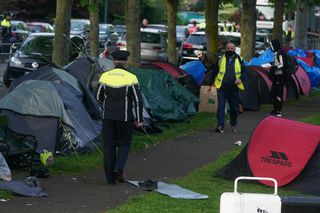'Unfair' tax change achieved goal of getting women back to work
Stock image
Controversial changes to the income tax system worked to prompt more married women into the labour force, a new report confirms.
Thousands of women went back into the workforce after budgetary changes in 2000, the study by the Economic and Social Research Institute (ESRI) shows.
This change has been attributed to much-criticised income tax changes introduced by then finance minister Charlie McCreevy in 2000. Critics said it was unfair, claiming it penalised women who care in the home.
He brought in tax individualisation, which meant less income tax is paid by couples where both work outside the home.
The change was blamed on helping to fuel the property boom, pushing the cost of housing through the roof and trapping families into requiring two incomes to get on the property ladder.
Up to the time the change was made, there was a system of joint taxation. This allowed a working spouse to use the tax allowances, credits and bands of a non-working spouse.
Under the old system, women who took up work outside the home ended up paying a higher tax rate. Tax individualisation meant men, or women if they had been the main breadwinner, could no longer benefit from part of their spouse's standard rate band. The band dictates at what level of income you pay the top rate of tax.
There was a furious backlash when the change was first announced, forcing Mr McCreevy to water down his proposals.
He was forced to help single-income families by introducing the home-carer's tax credit to partly offset the effects.
But an ESRI study by Karina Doorley said tax individualisation increased the financial incentive for those not working outside the home, typically women, to take up employment.
In the immediate aftermath of the changes, there were around 55pc of married women working outside the home, up from 50pc. This has since risen even more.
Charlie Weston:
The study concentrates on changes to the income tax system and the impact on female participation rates. It does not look at other issues.
"This analysis indicates the partial individualisation of the taxation system achieved one of its stated goals, to increase the incentive for spouses to join the labour market," Dr Doorley said.
She added policymakers are generally in favour of having more women in the workforce to counteract labour shortages.
The proportion of women in the workforce has been rising in recent years, but remains low compared with the rest of the EU, according to the report. Around 64pc of Irish women are employed, compared with 77pc of men. The pay gap is 17pc.
Join the Irish Independent WhatsApp channel
Stay up to date with all the latest news















